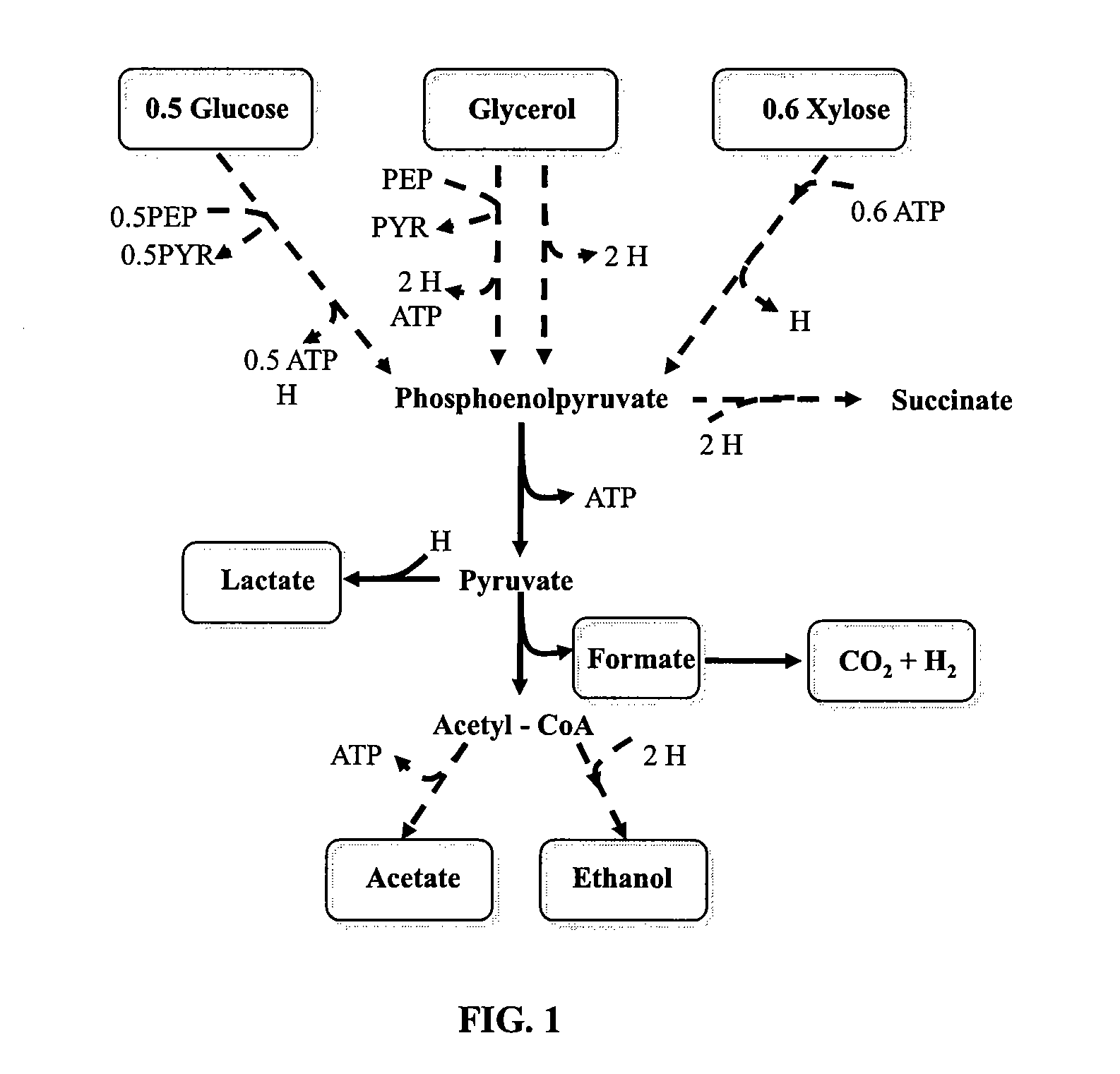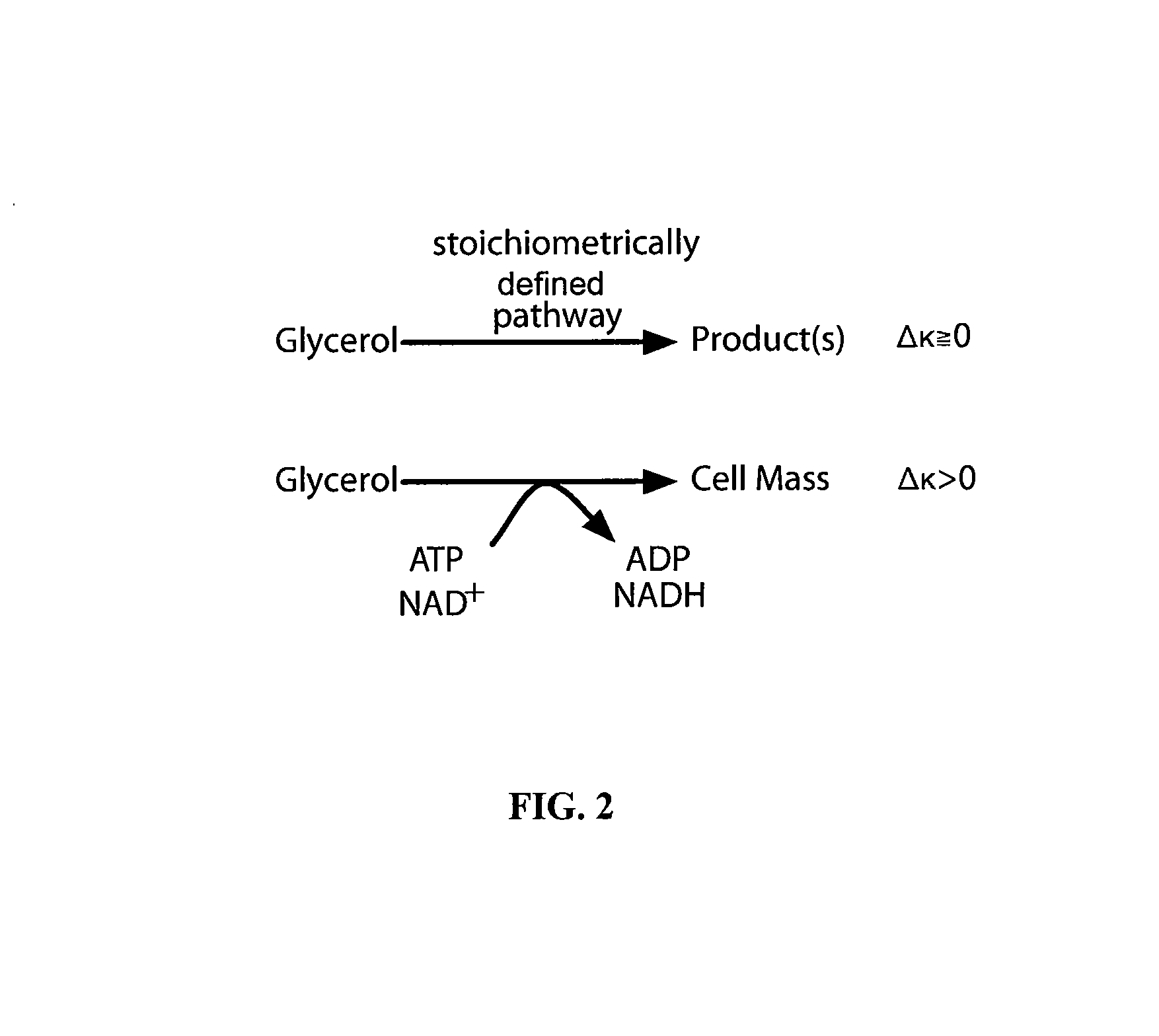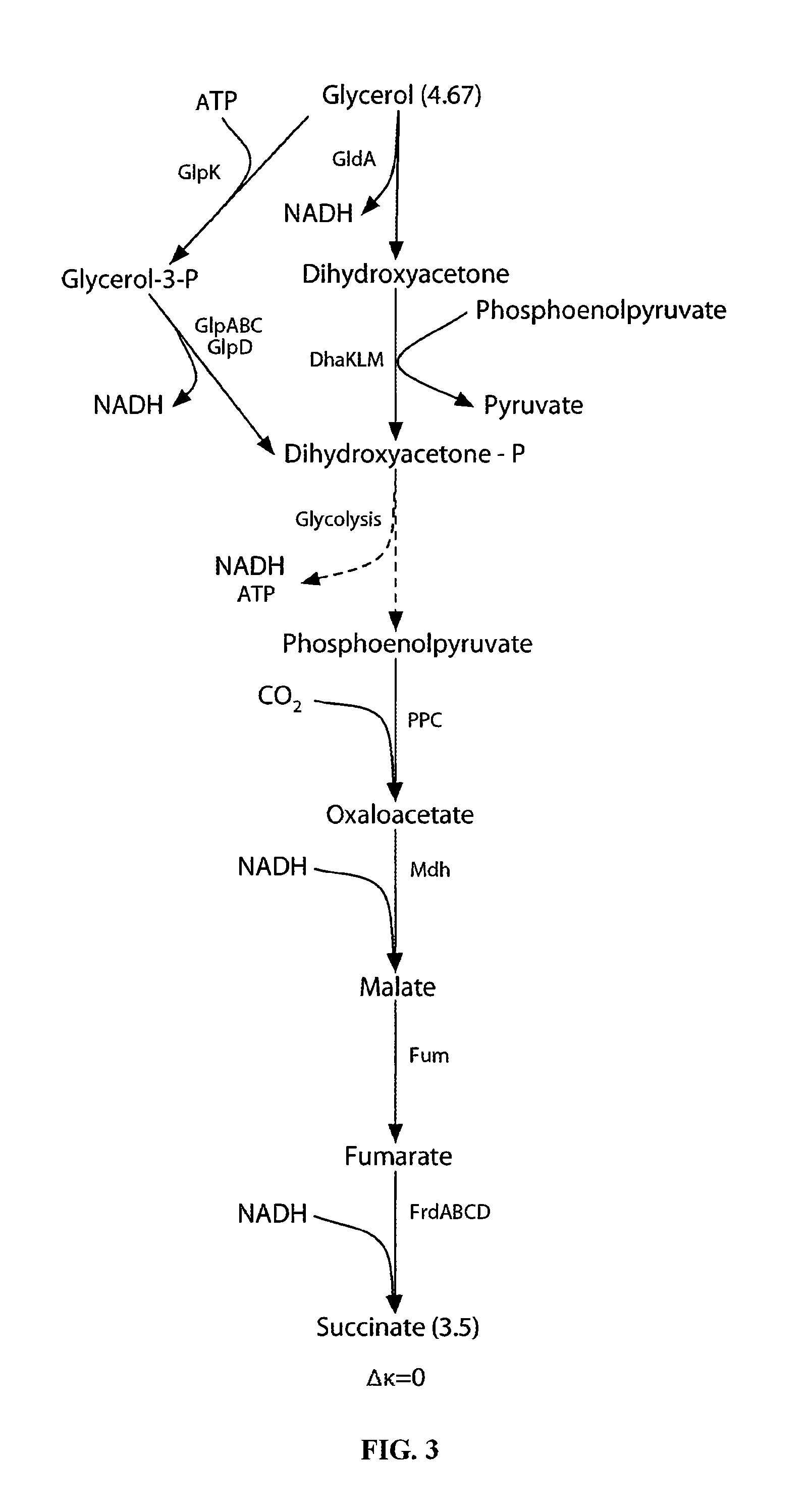Microaerobic cultures for converting glycerol to chemicals
a technology of microaerobic cultures and chemicals, applied in the field of microaerobic cultures for converting glycerol to chemicals, can solve the problems of poor cell growth, releasing pollutants into the air, and negating the positive environmental impact of biodiesel fuel use, so as to improve the yield of anaerobic cultures, maintain redox balance, and reduce the cost
- Summary
- Abstract
- Description
- Claims
- Application Information
AI Technical Summary
Benefits of technology
Problems solved by technology
Method used
Image
Examples
example 1
Microorganisms
[0044]It is envisioned that any appropriate microbial strain may be used with the present techniques, including members of the genera Aspergillus, Saccharomyces, Zygosaccharomyces, Pichia, Kluyveromyces, Candida, Hansenula, Dunaliella, Debaryomyces, Mucor, Torylopsis, Bacillus, Paenibacillus and Escherichia. A suitable microbial strain for the microbial synthesis process may be any wild type strain capable of producing the reduced chemical compound of interest. In addition, a suitable microbial strain may be obtained and / or improved by subjecting a parent strain of interest to a classical mutagenic treatment or to recombinant DNA techniques. Furthermore, such strains may then be subjected to sequential selection processes of metabolic evolution in which progeny strains are evaluated for improved performance under the desired reaction conditions. For example, such strains may be selected on the basis of high-performing biocatalysts. Markers of improved performance of a ...
example 2
Media and Growth Conditions
[0054]Typically cells are grown at 37° C. in appropriate media, although some bacteria have temperature optima at 35, 37, 39, or 41° C. Preferred growth media according to the present techniques may include minimal media or minimal salt media. For example, suitable media may include 4-morpholinepropanesulfonic acid media (MOPS). In certain embodiments, the phosphate salts in the media may be replaced with sodium salts. Glycerol feedstock may be provided in any suitable amount. For example, glycerol may be provided at 10 g / L.
[0055]Suitable pH ranges for the fermentation may be between pH 5.0 to pH 9.0. It is envisioned that alkaline pH may be suitable for improved yield of certain products while acidic pH may be suitable for improved yield of other products. For example, acidic pH may promote production of ethanol and hydrogen while alkaline pH may promote the production of ethanol and formic acid.
[0056]Fermentations may be conducted in any suitable microae...
PUM
| Property | Measurement | Unit |
|---|---|---|
| temperature | aaaaa | aaaaa |
| temperature | aaaaa | aaaaa |
| temperature | aaaaa | aaaaa |
Abstract
Description
Claims
Application Information
 Login to View More
Login to View More - R&D
- Intellectual Property
- Life Sciences
- Materials
- Tech Scout
- Unparalleled Data Quality
- Higher Quality Content
- 60% Fewer Hallucinations
Browse by: Latest US Patents, China's latest patents, Technical Efficacy Thesaurus, Application Domain, Technology Topic, Popular Technical Reports.
© 2025 PatSnap. All rights reserved.Legal|Privacy policy|Modern Slavery Act Transparency Statement|Sitemap|About US| Contact US: help@patsnap.com



